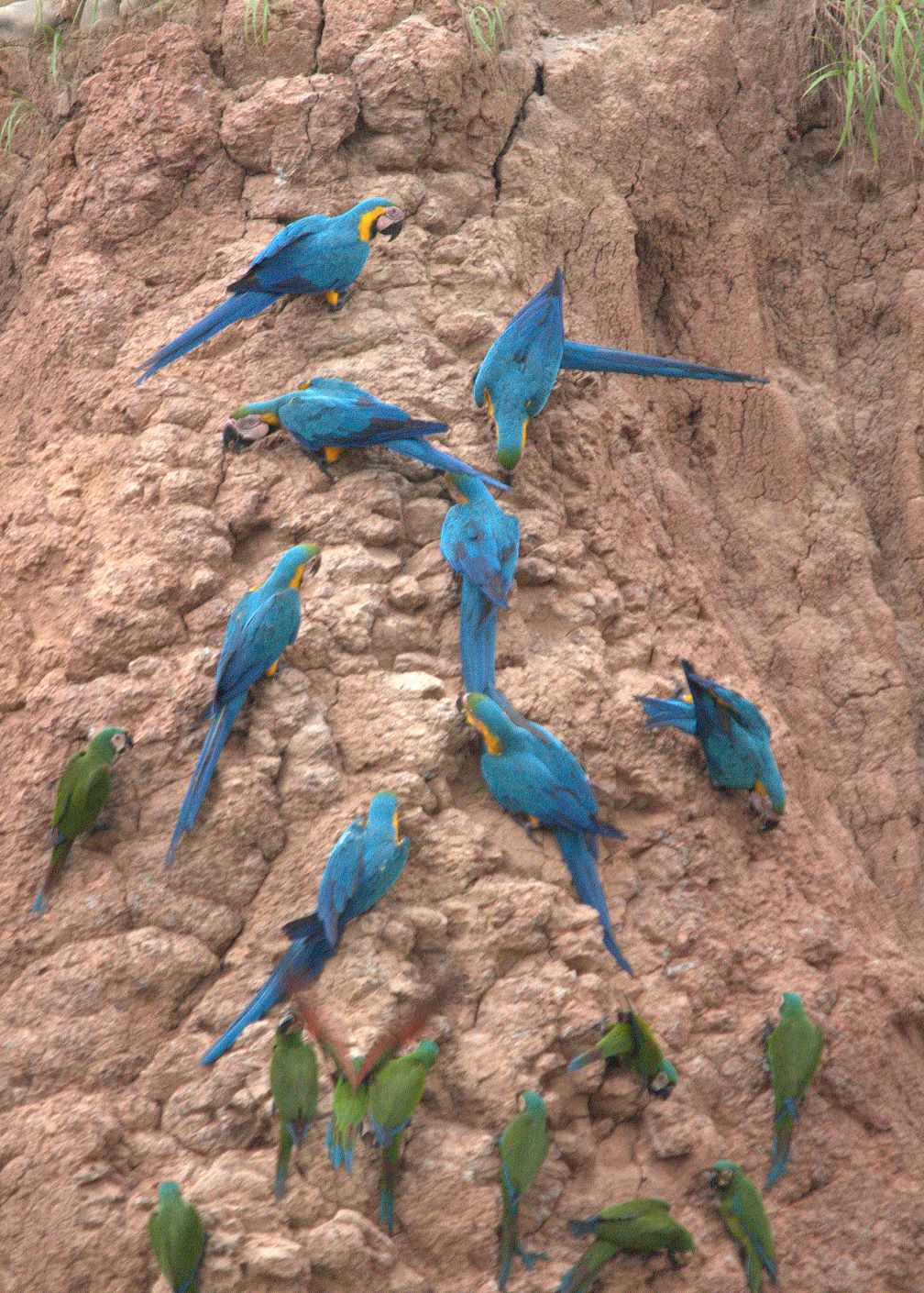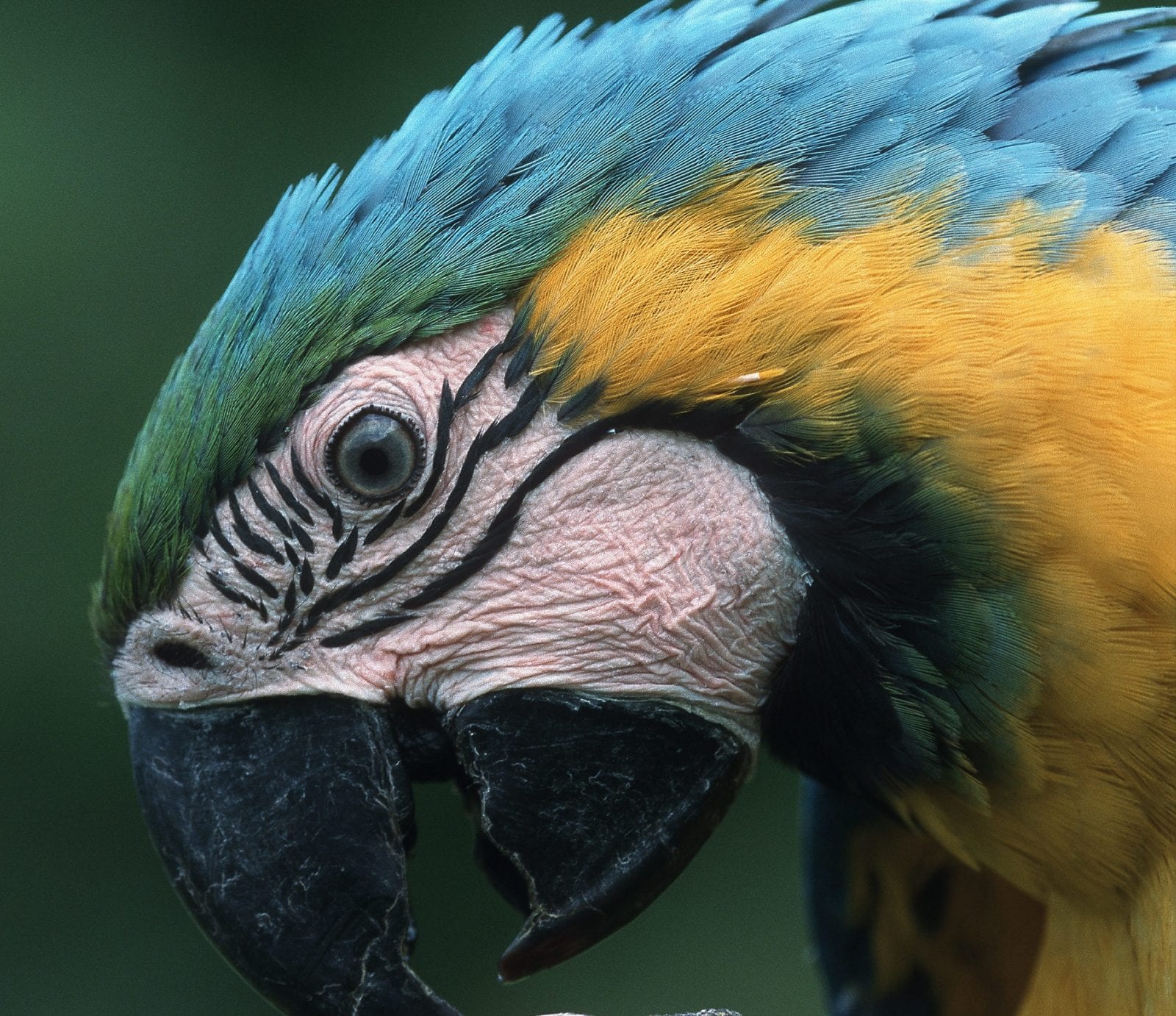General information
- Genus: Ara
- Species: Ararauna
- Also known as: Blue and Yellow Macaw, Yellow-Breasted Macaw, Blue Macaw
- Average length: 86 cm (33.5 in.)
- Adult weight: 1040 – 1286 g (36.4 – 45 oz.)
- Diet: Fruit, seeds, nuts, plants, nectar, clay
- Life span in the wild: 30 – 50 years
- Clutch size: 2 to 4 eggs
- Natural habitat: Humid tropical forests, usually near water, and swamps (the latter for nesting). Up to 500 m (1640 ft.).
- Geographical range: From Eastern Panama through Ecuador, Colombia, Venezuela and Brazil
Interesting Blue and Gold Macaw facts
- Like other macaws, in the Amazon, they congregate at riverbeds (claylicks) to eat clay.
- The Tambopata National Reserve in south-eastern Peru has several claylicks including the world’s largest known one.
- Macaws are the world’s biggest parrots.
- The Blue and Gold Macaw nests exclusively in cavities in dead trees and especially in tall palms in palm swamps (aguajales).
- Like other macaw species, many Blue and Gold macaws are considered to be as intelligent as an average 3-4 year old human.
- Macaws can fly up to 35 miles per hour.
- The scientific name Ara Ararauna comes from Tupi, a native language of Brazil, and means “dark parrot”.
IUCN conservation assessment
- Estimated world population: Unquantified but described as “uncommon”
- Conservation status: Least Concern
- Population trend: Decreasing
Sources
- 2010. Blue-and-yellow Macaw (Ara ararauna), Neotropical Birds Online (T. S. Schulenberg, Editor). Ithaca: Cornell Lab of Ornithology; retrieved from Neotropical Birds Online.
- BirdLife International 2012. Ara ararauna. In: IUCN 2012. IUCN Red List of Threatened Species. Version 2012.2. Downloaded on 22 April 2013.
- World Parrot Trust

Group of Blue and Yellow Macaws at a Colpa in Tambopata

Blue and Gold Macaw - Face up close
